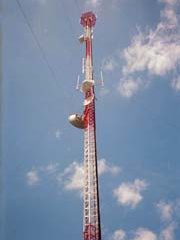Engineering and research-driven innovations in the field of communications are addressed here, in addition to business developments in the field of media-wide communications.
innovations-report offers informative reports and articles related to interactive media, media management, digital television, E-business, online advertising and information and communications technologies.

The increasing use of mobile phones has resulted in increased human exposure to radiofrequency electromagnetic fields: already more than 80% of the Finnish population have a mobile phone. Although the electromagnetic fields from mobile phones are weak, the high number of exposed persons, together with some provocative but inconclusive scientific results, has raised concerns about possible health hazards. Finnish universities and research institutes have investigated possible health effects of mobile

UK broadcasters are often accused of promoting obscenity through the increased use of bad language on TV. However, new research from the University of Warwick reveals that the language of public name-calling, or ’street theatre’, in early modern England was full of foul sexual insults that are far more lewd than today’s broadcast media – and women were the main offenders.
Professor Bernard Capp’s book ’When Gossips Meet’, tracks the history of poor and ’mi

The Owasys company in Zamudio has chosen Babel technology, world leader and pioneer in speech technologies, for its new Owasys22C mobile telephone. This mobile phone has been designed and developed by Owasys specifically for those persons who are blind or visually impaired. Initially the Owasys22C will have the Spanish and English version of Babel so that other languages can be added afterwards.
The launching of the Owasys22C on to the market will enable the visually impaired and the blind t

Scientists explore how we could interact with computers
Imagine ordering your meal in a restaurant by a simple tap on the table, transmitting your choice direct to the kitchens. Or placing an order for goods by making your selection on the surface of the shop window.
It may sound like science fiction, but this could be the way we interact with computers in the future, thanks to a pan-European research project, led by experts at Cardiff University, Wales, UK.
“The v

Researchers have successfully tested a system that can replace a cellular tower’s room full of communications hardware with a single desk-top style computer, making the technology affordable for small, rural communities.
The software is also capable of running emergency communications-such as police, fire and ambulance channels-on the same device as the civilian system, eliminating the need for a separate network of emergency communications towers.
“Rural customers are the firs

The Johns Hopkins University Applied Physics Laboratory (APL) in Laurel, Md., has opened the door to using reliable digital video as evidence in court by developing a system that identifies an attempt to alter digital video evidence.
“It’s not too hard to make changes to digital video,” says Tom Duerr, APL’s project manager. “But our system quickly and conclusively detects any alterations made to the original tape.” For the past two years Duerr has led development of the project for th